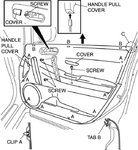- Thread starter
- #51
I have a problem I’ll throw out there:
Volvo S80, 2010 V8
In the winter months, when I first start the car I get a whiney sound from the engine that slowly settles as the car warms up. In the summer, there is basically little to no sound. Brought to Volvo and they suspect it is the rack and pinion (spelling?) and told me it would be $7k to fix. No thanks…walked out of there quickly. Local mechanic thinks it could be, may be the power stearing motor or pump.
Any thoughts?
Thank you in advance.
Love the idea of this thread.
Does it make noise without turning the steering wheel or when you turn the wheel?
















